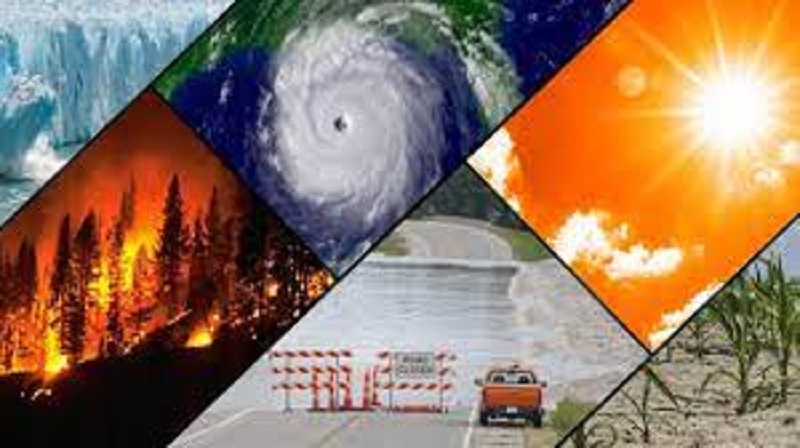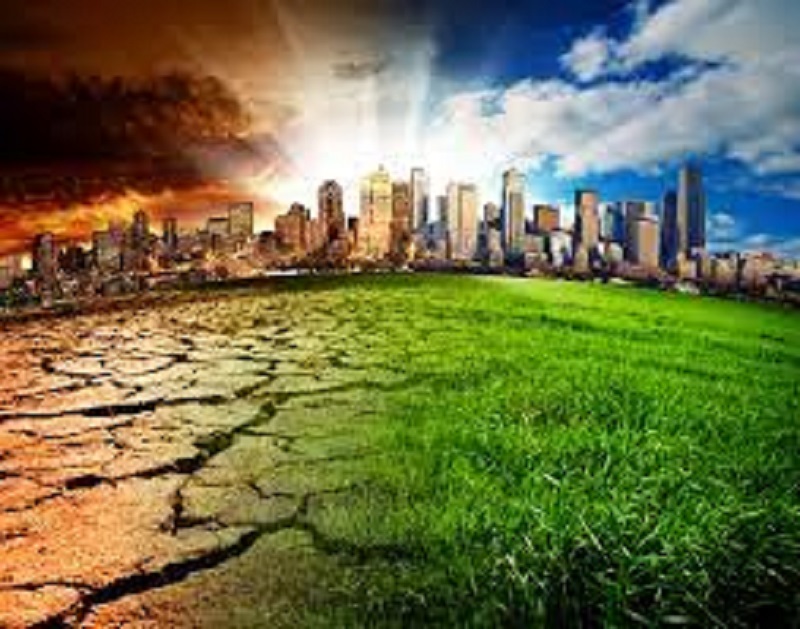
Just one piece of dry land remains on the surface of Earth and the rest is under water after ice-melting due to global warming. A mariner, his female friend, a child and some pirates are seen drifting in the ocean searching for the unknown land. A horrifying scene unfolds showing them fighting in the ocean to obtain a map to the land. It is the storyline of the Hollywood action flick ‘Waterworld’, a futuristic movie, a harbinger to the terrible times to come.

Climate change and disruptive weather have become a reality. One need not seek an expert view so as to
understand that the climate has changed globally and there is something gravely wrong with the weather in
every region. Hence, don’t look for further proofs. Even a layman would come to the conclusion that there has
been total disruption in the weather pattern for some time which is going from bad to worse and has become
unpredictable.
An unknown phenomenon in the previous century, climate change has begun to adversely affect human
beings, animals, plants and all other living beings both on the land and in the ocean.

Ordinary people who observe Nature in close proximity could pinpoint the differences in the salient features of
climate then and now. They view the changes taking place as an outcome of relentless human activities that have caused severe damage to Nature and the environment. Sudden surge in world population,
deforestation, emergence of big cities and large-scale industries, uncontrolled exploitation of the land, the
ocean and space have taken the breath out of the otherwise robust environment.
It is known that the climate change did not occur overnight but the change has been on a fast pace in the
recent decades which is alarming and a cause for serious concern. People, a few decades ago had not
cared for climate and never knew that it would have evolved in a way threatening the very existence of
human beings.
Also Read: Afghans facing starvation, crippling healthcare as economic crisis looms
Half a century ago, the Indian peninsula used to receive South West and South East monsoons on time. While
South West monsoon would have made its downpour in the first two or three days of June, South East monsoon
would arrive towards the end of October. What was peculiar to these two monsoons, one forms in the
Arabian Sea while the other in the Bay of Bengal, was that they would arrive and depart with an unfailing
regularity. Retreat of the former and onset of the latter were seamless. Both monsoons would have reached
northern plains of the county in the weeks after the onset.

Unlike today, flash floods and rain-caused devastations were not frequent occurrences in the Indian
subcontinent. Mostly monsoons, summer and winter arrived and took leave with a clockwork precision. Such
a pattern has been irrevocably lost over the decades.
Europe has reeled under weather vagaries in the recent years with extreme heat and unusual heavy rains resulting in flash floods. Higher temperatures across Europe are likely to bring in more intense rains causing frequent floods. Known for quiet, pleasant weather conditions after winter, the whole of Europe has of late experienced widespread climate disasters.
According to weather projections, the sea level will keep rising and shorelines will decrease in the coming
decades. Coastal flooding and extreme temperatures are expected to increase throughout Europe. Increased
heat waves and frequent floods will put people’s health at high risk. Climate change due to global warming is
expected to hit Europe harder than any other regions in the world.

Climate in the US has taken significant changes from 2001. The country has been undergoing widespread
and varied changes in climate in the last two decades. It has witnessed the highest temperatures and its different
regions have experienced varied climatic changes during the period. Possibilities of worsening drought and
floods have been forecast. Snow and rainfall patterns are shifting as temperatures rise across the US. For
instance, lakes don’t freeze as before, snow melts quickly and pests and insects don’t die as usual.
Almost a dozen American states in the east coast have faced hurricanes in rapid succession leaving a trail of
destruction. Climatologists predict hurricane wind speeds, rainfall intensity and storm surge in these states
are likely to increase. In the past decade, at least 100 tropical storms and hurricanes have impacted the states
in the Atlantic basin, of which five were extremely destructive. Scientists say hurricanes form in both the
Atlantic and the Pacific but those in the former turn disastrous and make the landfall while those in the latter
never reach the continent.

In simple terms, global warming due to human activities is found to be the only cause of climate change globally
and shift in weather pattern in every region. Fossil fuel burning over decades has increased heat-trapping
greenhouse gas levels in Earth’s atmosphere, raising average surface temperature. Extensive human
activities since industrial revolution have increased global average temperature by 1 degree Celsius which
is now increasing by 0 .2 degree Celsius per decade. It results in warming the atmosphere, land and ocean.

According to scientists, extreme weather and climate disasters are increasing in frequency and intensity
because heat in the atmosphere and warmer ocean surface temperatures lead to increased wind speed.
They say rising sea levels and ice-melting at poles and in mountain glaciers can cause hurricanes, heat waves,
wildfires, droughts, floods etc.
The alarm bells have started ringing and signs of impending global disasters have appeared on the
chocking planet before billions of people face immediate risk. World nations are vigorously discussing the issue of global warming and have renewed their commitment to cut carbon emission. The US and China, the biggest
CO2 emitters, have pledged to cooperate more over the next decade.
The climate conference held in Glasgow this month called for action towards keeping global temperature rise
within 1.5 degree Celsius. UN Secretary General Antonio Guterres called upon member nations to phase
out the usage of coal and protect vulnerable communities from the impact of climate change.
The conference has set the goal of reaching net zero by 2050 but the developing countries, including India,
expressed their inability to meet short term target in reducing coal carbon emission as their development and
poverty eradication programmes will get stalled. India has promised to shift to renewable energy and reach net
zero carbon emission by 2070.
By : KS Rajagopal

Post Your Comments